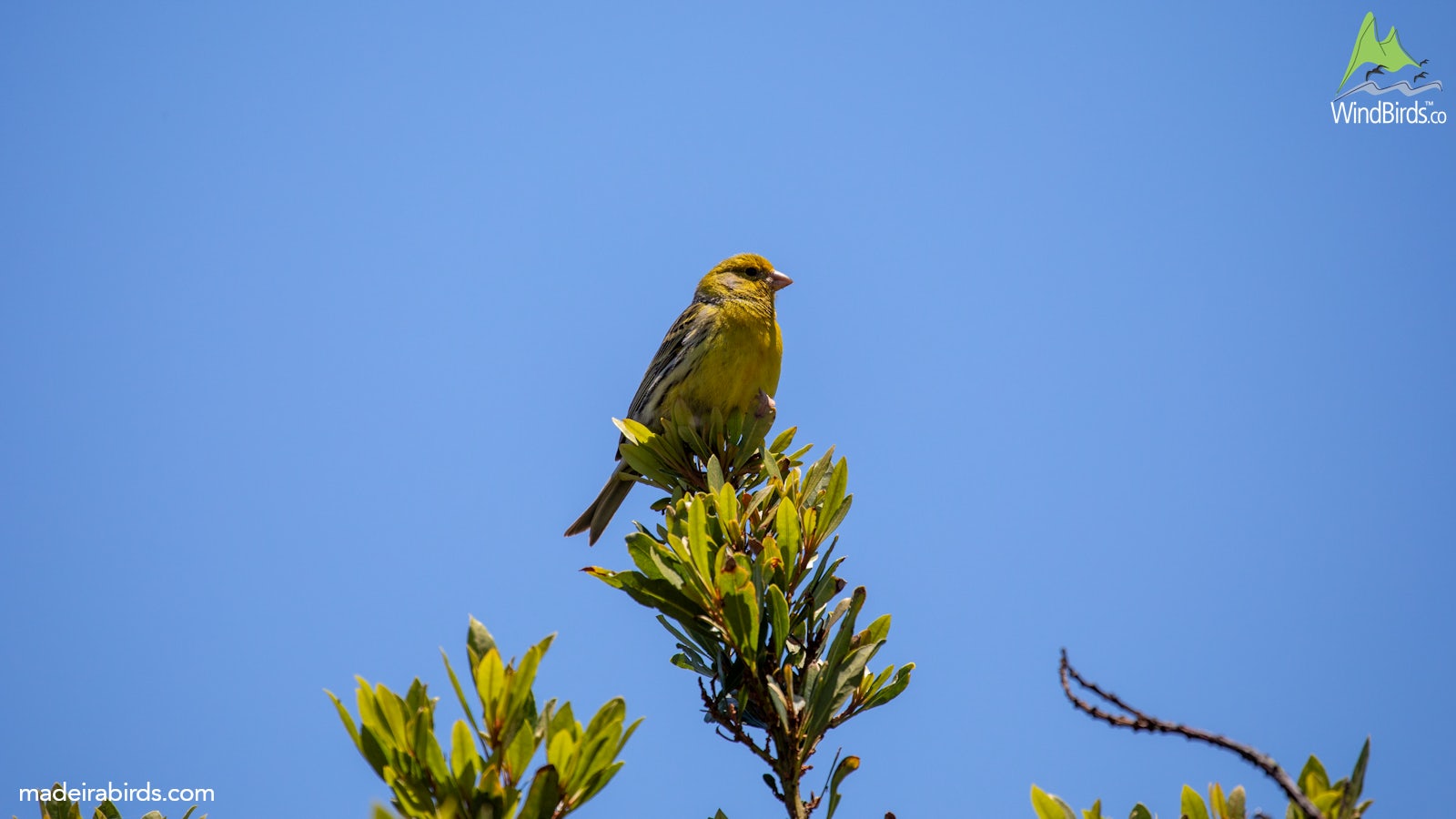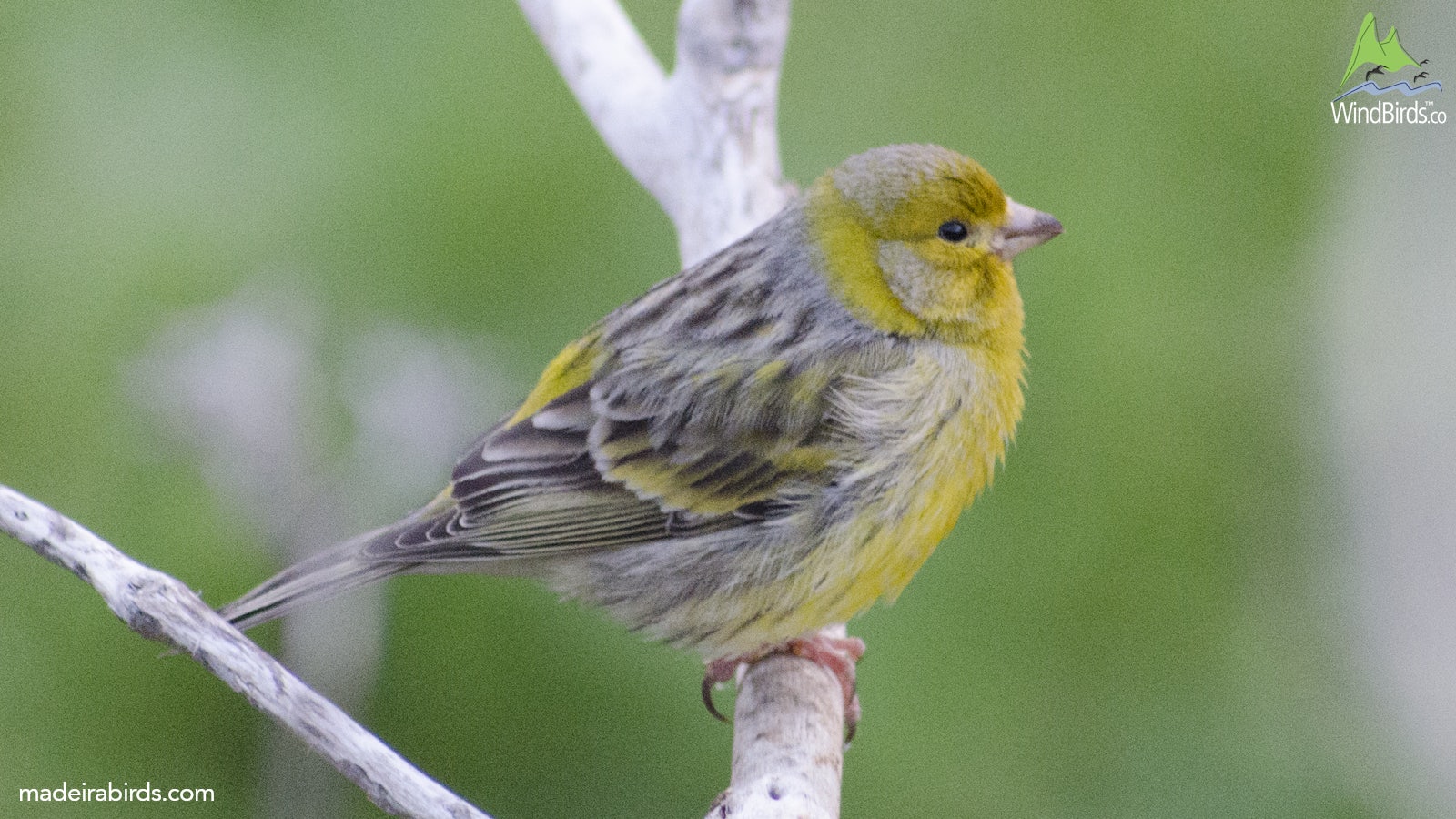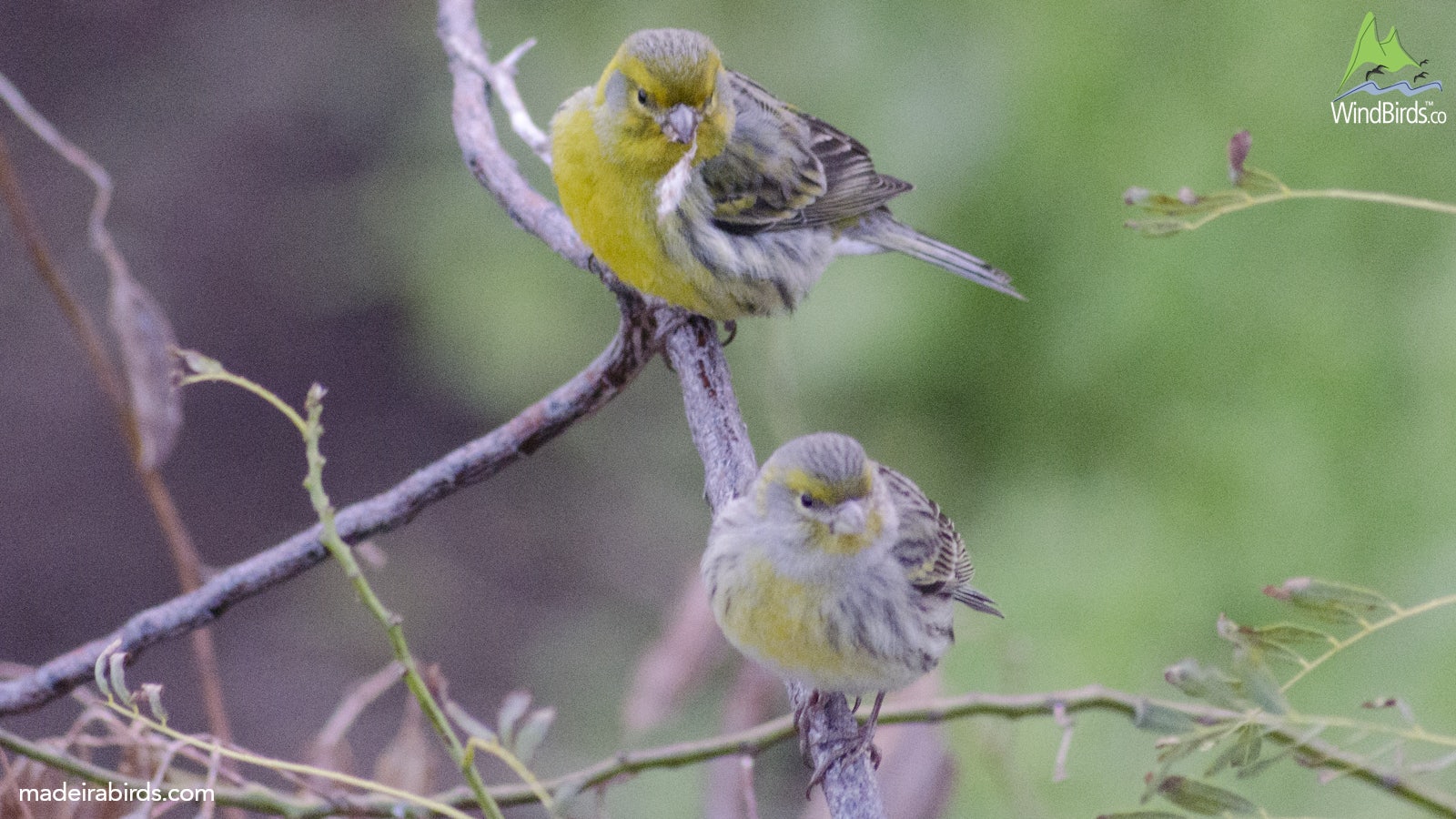Atlantic Canary Serinus canaria (Linnaeus, 1758)
Order: Passeriformes Family: Fringillidae Status: Breeding in Madeira

Recommended birdwatching tours to watch this bird
Full-day birdwatching
Half-day birdwatching
Atlantic Canary Field ID Keys
Shape & Size
A small songbird/finch with a roundish body, a relatively long, forked tail and a fairly heavy bill.

Colour Pattern
In Madeira archipelago, a Canary is easily identified by its bright yellow chest and brownish back with greyish stripes. The female is distinguished from the male by being less colourful.
Behavior
A sociable and familiar finch that likes to perch on trees and sing all year round. It is sometimes seen in joint flocks of European Goldfinch and Common Linnet

Habitat
The Canary is native to the Macaronesia region (Madeira, Azores and the Canary Islands).
This bird is widely distributed throughout the Madeira archipelago, being found on the islands of Madeira, Desertas and Porto Santo, from seashore to upper altitudes. Being so it does not have a well-defined habitat, but farmlands, gardens and areas with creeping or sparse vegetation are the most common.
Distinction from similar species
Atlantic Canary is very similar to European Serin being the latter smaller in size, shorter-tailed, with a shorter bill and less yellow on the underparts. Songs of each species will be a good diagnostic feature, though Madeira archipelago only have 1 record of Serin.
Serinus canaria Biometrics
Total length: 12.5 - 13.5 cm (Svensson et al, 2009)
Other Bird Facts
Seasonality in Madeira: All year
Breeding: Canaries lay 3 to 5 eggs up to 4 broods between January and July.
Diet: Feeds on seeds.
Status
Madeira local status by Correia-Fagundes et al, 2021: Very Common breeding bird
Madeira local status by Romano et al, 2010: Very Common breeding bird
Madeira local status by Zino et al, 1995: Very Common breeding bird
Conservation status by the IUCN Red List Categories, 2013: Least Concern ver 3.1
Curiosities
The Canaries were once used in coal mining as a warning system. Due to their tendency to sing much of the time, they provided good audible evidence for toxic gas releases, as it would die before affecting the miners.
Name of this species in other languages
Portuguese: Canário
German: Kanarengirlitz
Dutch: Kanarie
Swedish: Kanariefågel
Danish: Kanariefugl
Finish: kanarianhemppo
Norwegian: Kanariirisk
Spanish: Canario, Serín Canario
French: Serin des Canaries
Italian: Canarino delle Isole Canarie
Polish: Kanarek
Slovak: Kanárik divý
Czech: Kanár divoký
English synonyms: Island Canary
Edited by Catarina Fagundes